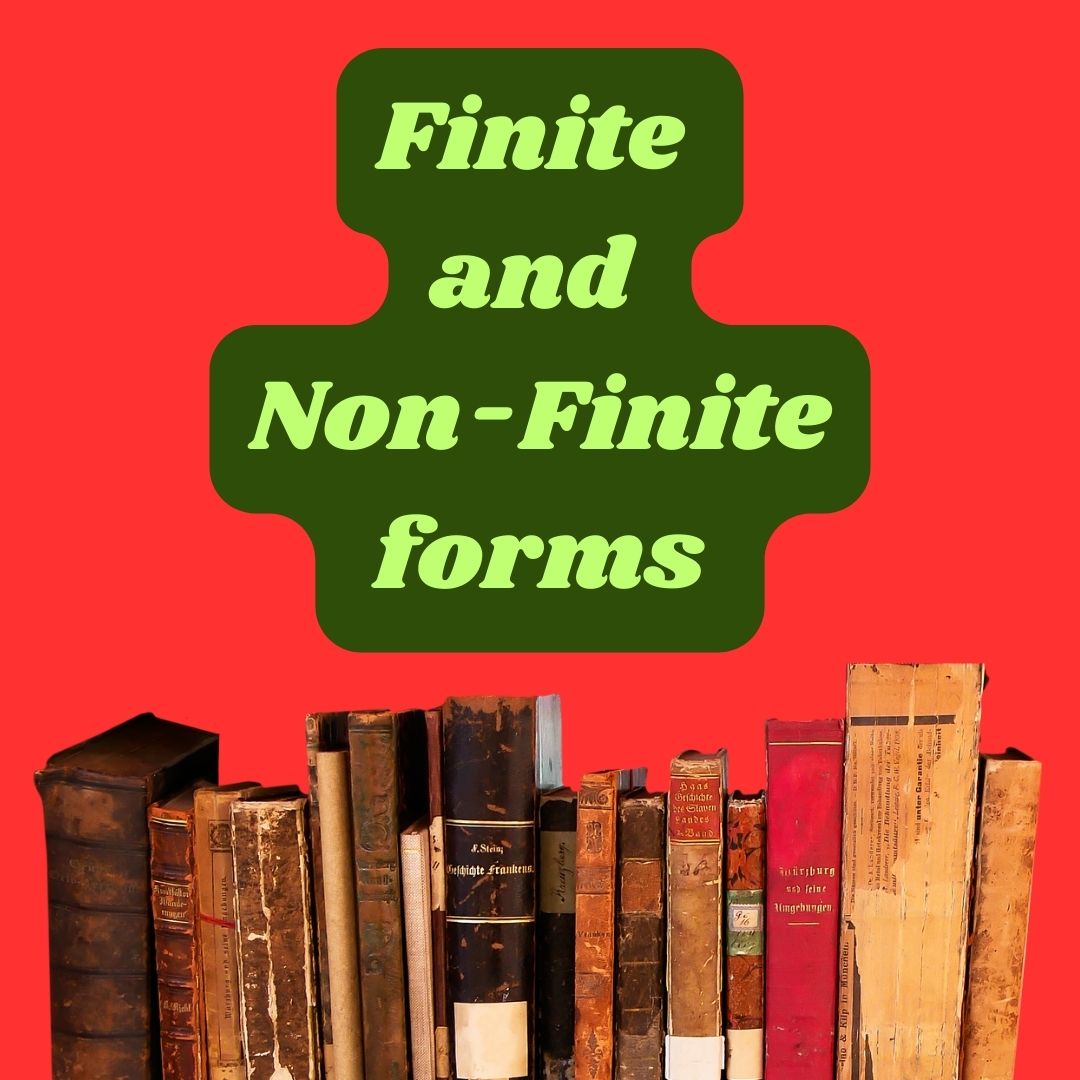Finite and non- finite forms of the Verbs

Finite and non-finite forms of the verbs:
In grammar, a finite verb is a verb form that shows tense, person, number, and mood.
A finite verb is used to indicate that the action or state of the verb is limited to a specific time or subject.
The categories that can be expressed by a finite verb:
Person:
The person category refers to the speaker (first person), the person being addressed (second person), or a third person (someone or something not involved in the conversation).
Examples:
1. I am walking to the store (first person singular).
2. You are playing soccer with your friends (second-person plural).
3. He is reading a book in the library (third person singular).
Number:
The number category indicates whether the subject is singular or plural.
Examples:
1. She is playing tennis (singular subject)
2. They are going to the beach (plural subject).
Tense:
The tense category indicates the time of the action or state of the verb.
Examples:
1. She will be singing at the concert tomorrow (future tense).
2. They have already finished their homework (present perfect tense).
3. He studied for his exam last night (past tense).
Voice:
The voice category indicates whether the subject of the sentence is performing the action (active voice) or receiving the action (passive voice).
Examples:
1. The dog bit the mailman (active voice).
2. The mailman was bitten by the dog (passive voice).
Mood:
The mood category indicates the attitude or intention of the speaker.
There are three main moods in English: indicative, imperative, and subjunctive.
Examples:
1. I hope that he is coming to the party (indicative mood).
2. Go to the store and buy some bread (imperative mood).
3. If I were you, I would take the job (subjunctive mood).
In summary, a finite verb is a verb form that shows tense, person, number, voice, and mood. These categories help to provide context and clarify the meaning of the verb in a sentence.
Non-finite verb (infinite form) form
that does not show tense, person, number, or mood.
Instead, it is a verb form that is not limited by any of these categories and can be used in a variety of ways in a sentence.
Three main types of non-finite verb forms in English:
Infinitive:
The infinitive is a non-finite verb form, preceded by the word to.
It can be used as a noun, an adjective, or an adverb in a sentence.
Examples:
1. To swim is my favourite hobby (used as a subject/noun).
2. She has a book to read (used as an adjective).
3. He walked slowly to see the sunset (used as an adverb).
Gerund:
The gerund is a non-finite verb form that ends in -ing and is used as a noun in a sentence.
It can be the subject, object, or complement of a sentence.
Examples:
1. Swimming is good exercise (used as the subject).
2. I enjoy reading books (used as the object).
3. Her favourite activity is singing (used as a complement).
Participle:
The participle is a non-finite verb form that ends in -ed (for regular verbs) or -en, -d, or -t (for irregular verbs).
It can be used as an adjective, modifying a noun or pronoun.
Examples:
1. The broken vase was on the floor (used as an adjective).
2. The excited children ran to the playground (used as an adjective).
In summary, the infinite form of a verb is a non-finite verb form that does not show tense, person, number, or mood.
There are three main types of non-finite verb forms in English: infinitive, gerund, and participle, each with its own unique use in a sentence.
Finite and non- finite forms of the Verbs
The Basic forms of The English verb